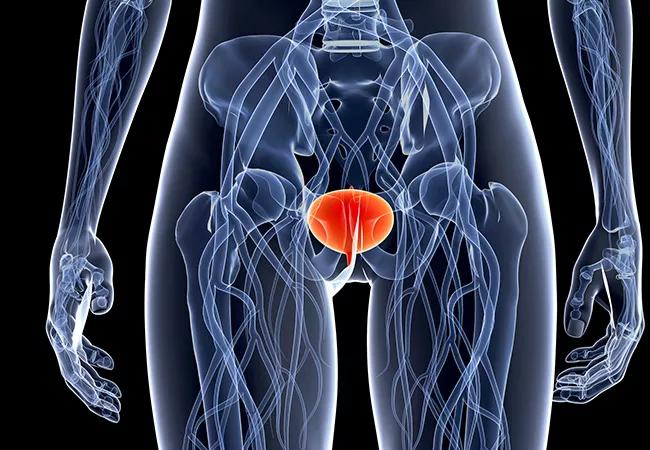Study provides evidence for effectiveness of both options

A recent randomized clinical trial conducted at Cleveland Clinic and other sites demonstrates high success rates for both onabotulinumtoxinA (Botox®) and sacral neuromodulation (Interstim®) in women with refractory urgency urinary incontinence (UI), reports Sandip P. Vasavada, MD, Urologic Director of Cleveland Clinic’s Center for Female Pelvic Medicine and Reconstructive Surgery. Dr. Vasavada served as one of the few urologists among a group of gynecologists for the Refractory Overactive Bladder: Sacral Neuromodulation vs Botolinum Toxin Assessment (ROSETTA) trial conducted by the Pelvic Floor Disorders Network. Results were published in the Journal of the American Medical Association in October 2016.
Advertisement
Cleveland Clinic is a non-profit academic medical center. Advertising on our site helps support our mission. We do not endorse non-Cleveland Clinic products or services. Policy
“This was a large, well-done study and the first of its kind to compare two third-line treatments for UI, both heavyweights in their class,” says Dr. Vasavada. (A third option is posterior tibial nerve stimulation.)
Approximately 30 million people (both men and women) suffer from overactive bladder and standard first- and second-line treatments such as pelvic floor muscle training, fluid restriction and anticholinergics don’t resolve the problem in approximately 40 percent of these people. “Thus, we’re talking about millions of patients who might be candidates for a third-line treatment such as Botox or Interstim,” says Dr. Vasavada.
A total of 381 female patients with refractory UI (mean age 63 years) were enrolled in this multicenter, open-label, randomized clinical trial at nine U.S. medical centers. Half (n = 192) were randomized to receive a single cystoscopic intradetrusor injection of 200 U of onabotulinumtoxinA under local anesthesia. The other half (n = 189) were randomized to receive sacral neuromodulation involving surgical placement of an electrical lead under local and monitored anesthesia. Patients were evaluated at six months.
“Both therapies had high success rates — in fact, some of the highest success rates ever reported for neuromodulation — low complication rates and high rates of overall patient satisfaction,” says Dr. Vasavada.
Patients in the onabotulinumtoxinA group had 3.9 fewer UI episodes per day over six months compared with baseline; patients in the neuromodulation group had 3.3 fewer episodes per day. The difference between the groups was statistically significant. Complications were also low, although patients receiving Botox had a higher risk of urinary tract infections (UTIs — 35 percent in the onabotulinumtoxinA group versus 11 percent in the neuromodulation group) and the need to self-catheterize (8 percent at one month, 4 percent at three months and 2 percent at six months). “Both UTIs and self-catheterizations are to be expected in this population with use of Botox, and we actually assumed they would occur at a higher rate,” Dr. Vasavada says. In contrast, neuromodulation is known to treat bladder-emptying problems, so it would not be expected that self-catheterizations would be an issue. Three percent of the women in the neuromodulation group, however, did have their device removed or revised during the six-month study period.
Advertisement
Although the objective parameters were in favor of onabotulinumtoxinA, due to the higher rate of UTIs and self-catheterizations in that group the investigators concluded that the difference between treatments was of uncertain clinical significance. “Ultimately,” says Dr. Vasavada, “the data from the ROSETTA trial confirm that both Botox and Interstim are good treatment options, and the difference between them is in the eye of the beholder. I utilize both of these treatment strategies in my patients with refractory UI.”
Further analyses of the data are ongoing, including with regard to cost.
Advertisement
Advertisement

Pediatric urologists lead quality improvement initiative, author systemwide guideline

Fixed-dose single-pill combinations and future therapies

Reproductive urologists publish a contemporary review to guide practice

Two recent cases show favorable pain and cosmesis outcomes

Meta-analysis assesses outcomes in adolescent age vs. mid-adulthood

Proteinuria reduction remains the most important treatment target.

IgA nephropathy is a relatively common autoimmune glomerular disease that can be diagnosed only by biopsy

Oncologic and functional outcomes are promising, but selection is key